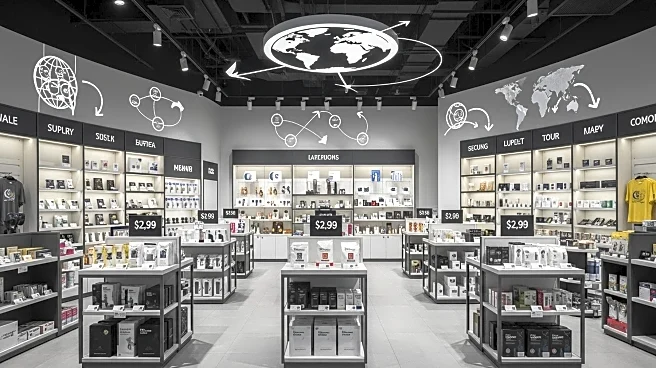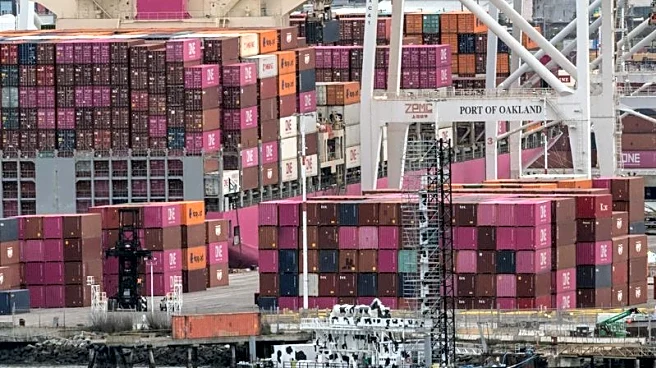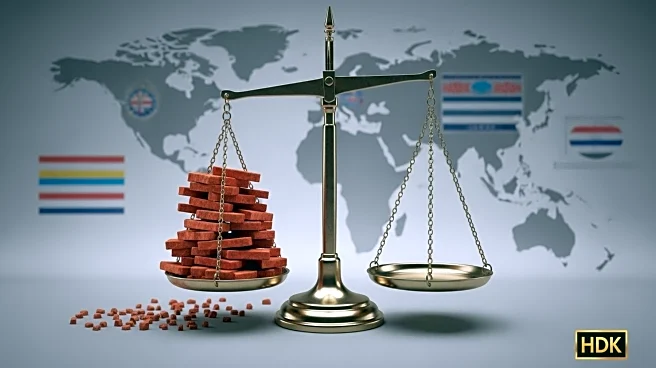What's Happening?
Best Buy is facing significant challenges due to U.S. tariff escalations, which have peaked at 145% on Chinese imports. The company is strategically recalibrating by diversifying sourcing, absorbing costs through supplier negotiations, and leveraging omnichannel agility. Best Buy has reduced its reliance on China and shifted production to countries like Vietnam and South Korea. Despite these efforts, the company reported a decline in comparable sales and trimmed its full-year revenue guidance due to ongoing uncertainty.
Why It's Important?
Best Buy's strategic resilience is crucial for maintaining its value proposition in a high-exposure retail sector. The company's ability to balance cost absorption, supply chain diversification, and consumer affordability will determine its long-term viability. The focus on nearshoring and operational agility is essential for mitigating tariff impacts and sustaining profitability. Best Buy's approach highlights the broader challenges faced by retailers in navigating trade policy pressures.
What's Next?
Best Buy must accelerate its shift to nearshoring and invest in operational agility to mitigate risks associated with tariff volatility and macroeconomic headwinds. The company's focus on expanding its services and digital offerings will be key to diversifying revenue streams and maintaining competitiveness. Monitoring Best Buy's progress in reshoring production and the sustainability of its services segment will be crucial for assessing its long-term value.
Beyond the Headlines
Best Buy's strategic moves underscore the broader implications of trade policy pressures on the retail sector. The company's focus on diversification and innovation reflects the need for adaptability in a volatile market. The shift towards nearshoring highlights the importance of resilience in navigating geopolitical uncertainties and sustaining economic growth.












